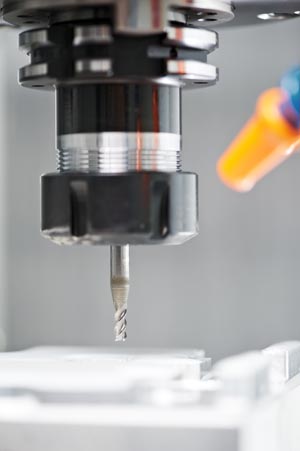How Computer Aided Manufacturing is Changing the World
To help develop this article, click 'Edit this article' above.
Computer Aided Design (CAD) and Computer Aided Manufacturing (CAM) machinery are found in all industries all over the globe. Many factory floors are now entirely void from human interaction, populated only by 'robots'. The introduction of Computer Numerical Control (CNC) machinery has enabled industry to not just cut back on manpower but also to produce a higher quality of precision parts that are entirely free from human error and cheaper.
CNC machining and milling does however require the precision of a trained CAD operator; this is where human intervention is still necessary. Behind every CNC lathe, drill, or machine there is a computer that is using CAD software to transmit the messages to the machine to tell it what to do. Behind that computer there is the software professional who programmed it, behind that the person who designed the software, and behind that the person who designed the computer in the first place.
Although a robot can carry out virtually any task required of it in the field of CNC engineering, highly trained professionals are required to monitor these robots and ensure they do what they are programmed to.
On a factory floor you will see many CNC lathes, drills, and machines at work, and no one anywhere to be seen. Some setups are left to run overnight by themselves; this is made possible by the fact that on detection of an error by the computer, the CAD software will shut down the machine in question until an engineer can attend.
Computer aided design is used in a huge range of applications in the modern world; from mass producing car parts to boring out metal tubes, CNC milling can quickly carry out tasks that it used to take people many hours to do. CAD software allows for further precision, and CAD design has virtually put an end to hand drawings; with precise vector lines being used by CAD software. The human brains are still present behind the design, but the human error is not.
CNC is changing the world that we live in, from something as simple as making a tin can perfectly round, to engineering aerospace parts. With every advance in technology, precision engineered parts can be made to higher specifications, with more complex designs, and without human error.
--Kristian 11:50, 25 May 2015 (BST)CAM Machine; Bringing you the best in CNC in Bristol
Featured articles and news
RTPI leader to become new CIOB Chief Executive Officer
Dr Victoria Hills MRTPI, FICE to take over after Caroline Gumble’s departure.
Social and affordable housing, a long term plan for delivery
The “Delivering a Decade of Renewal for Social and Affordable Housing” strategy sets out future path.
A change to adoptive architecture
Effects of global weather warming on architectural detailing, material choice and human interaction.
The proposed publicly owned and backed subsidiary of Homes England, to facilitate new homes.
How big is the problem and what can we do to mitigate the effects?
Overheating guidance and tools for building designers
A number of cool guides to help with the heat.
The UK's Modern Industrial Strategy: A 10 year plan
Previous consultation criticism, current key elements and general support with some persisting reservations.
Building Safety Regulator reforms
New roles, new staff and a new fast track service pave the way for a single construction regulator.
Architectural Technologist CPDs and Communications
CIAT CPD… and how you can do it!
Cooling centres and cool spaces
Managing extreme heat in cities by directing the public to places for heat stress relief and water sources.
Winter gardens: A brief history and warm variations
Extending the season with glass in different forms and terms.
Restoring Great Yarmouth's Winter Gardens
Transforming one of the least sustainable constructions imaginable.
Construction Skills Mission Board launch sector drive
Newly formed government and industry collaboration set strategy for recruiting an additional 100,000 construction workers a year.
New Architects Code comes into effect in September 2025
ARB Architects Code of Conduct and Practice available with ongoing consultation regarding guidance.
Welsh Skills Body (Medr) launches ambitious plan
The new skills body brings together funding and regulation of tertiary education and research for the devolved nation.
Paul Gandy FCIOB announced as next CIOB President
Former Tilbury Douglas CEO takes helm.
UK Infrastructure: A 10 Year Strategy. In brief with reactions
With the National Infrastructure and Service Transformation Authority (NISTA).























